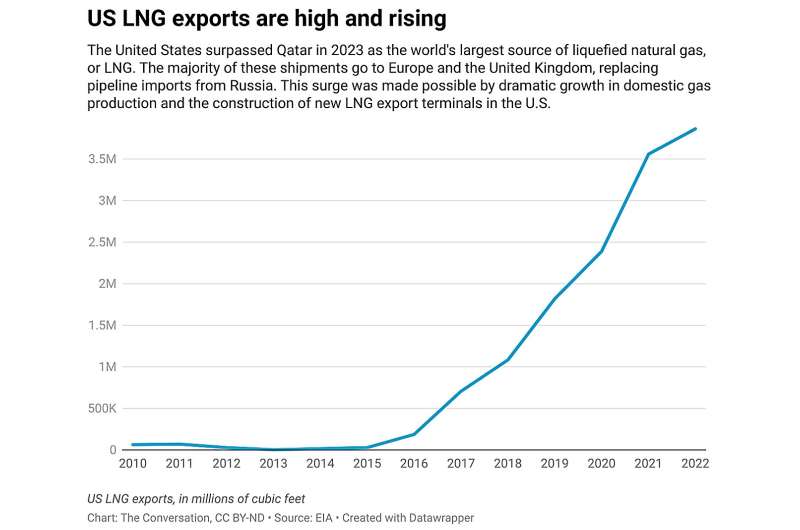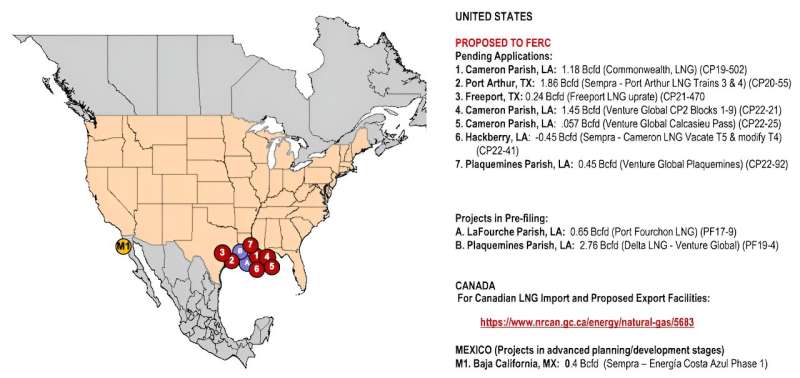
The Biden administration has frozen pending decisions on permit applications to export liquefied natural gas, or LNG, to countries other than U.S. free trade partners. During this pause, which will last for up to 15 months, the administration has pledged to take a "hard look" at economic, environmental and national security issues associated with exporting LNG.
Environmental advocates, who have expressed alarm over the rapid growth of U.S. LNG exports and their effects on Earth's climate, praised this step. Critics, including energy companies and members of Congress, argue that it threatens European energy security and energy jobs in the U.S. Emily Grubert, associate professor of sustainable energy policy at the University of Notre Dame and a former official at the U.S. Department of Energy, explains why large-scale LNG exports raise complex questions for U.S. policymakers.
Is the US a major LNG supplier?
The U.S. is now the world's largest LNG exporter. In November 2023, the most recent month with full data, the U.S. exported about 390 billion cubic feet of LNG, a record high.
The U.S. has been a net exporter since 2017, with export volumes now equal to about 15% of our domestic consumption. This gas sells for higher prices than natural gas delivered domestically, but it also costs more to process and deliver. As of 2022, the U.S. provided 20% of total global LNG exports.
Are there plans for exporting even more LNG?
The U.S. Energy Administration projects that North American LNG export capacity—largely from the U.S.—is likely to more than double from its current level by the end of 2027. In the U.S., five LNG export terminals are currently under construction, and are not affected by the current pause.

Applications for additional export terminals are under review. These are the applications for which decisions have been temporarily paused.
How does LNG fit into a transition away from fossil fuel?
LNG, and natural gas in general, has an uneasy place in the decarbonization transition. Natural gas is a fossil fuel. Burning it produces carbon dioxide that contributes to climate change.
Furthermore, natural gas that has been processed for use is essentially pure methane, which is itself a greenhouse gas. When natural gas leaks to the atmosphere from sources like wells, pipelines or processing plants, it adds to climate change. Since the mid-1800s, human activities—mainly, burning fossil fuel—have raised Earth's temperature by roughly 2 degrees Fahrenheit (1.1 Celsius) above preindustrial levels. Methane has caused about 0.9 degrees F (0.5 C) of that warming above preindustrial global temperatures.
This article is republished from The Conversation under a Creative Commons license. Read the original article.![]()
Citation: Biden's 'hard look' at liquefied natural gas exports: How exactly does natural gas fit with US climate goals? (2024, February 8) retrieved 8 February 2024 from https://techxplore.com/news/2024-02-biden-hard-liquefied-natural-gas.html
This document is subject to copyright. Apart from any fair dealing for the purpose of private study or research, no part may be reproduced without the written permission. The content is provided for information purposes only.
